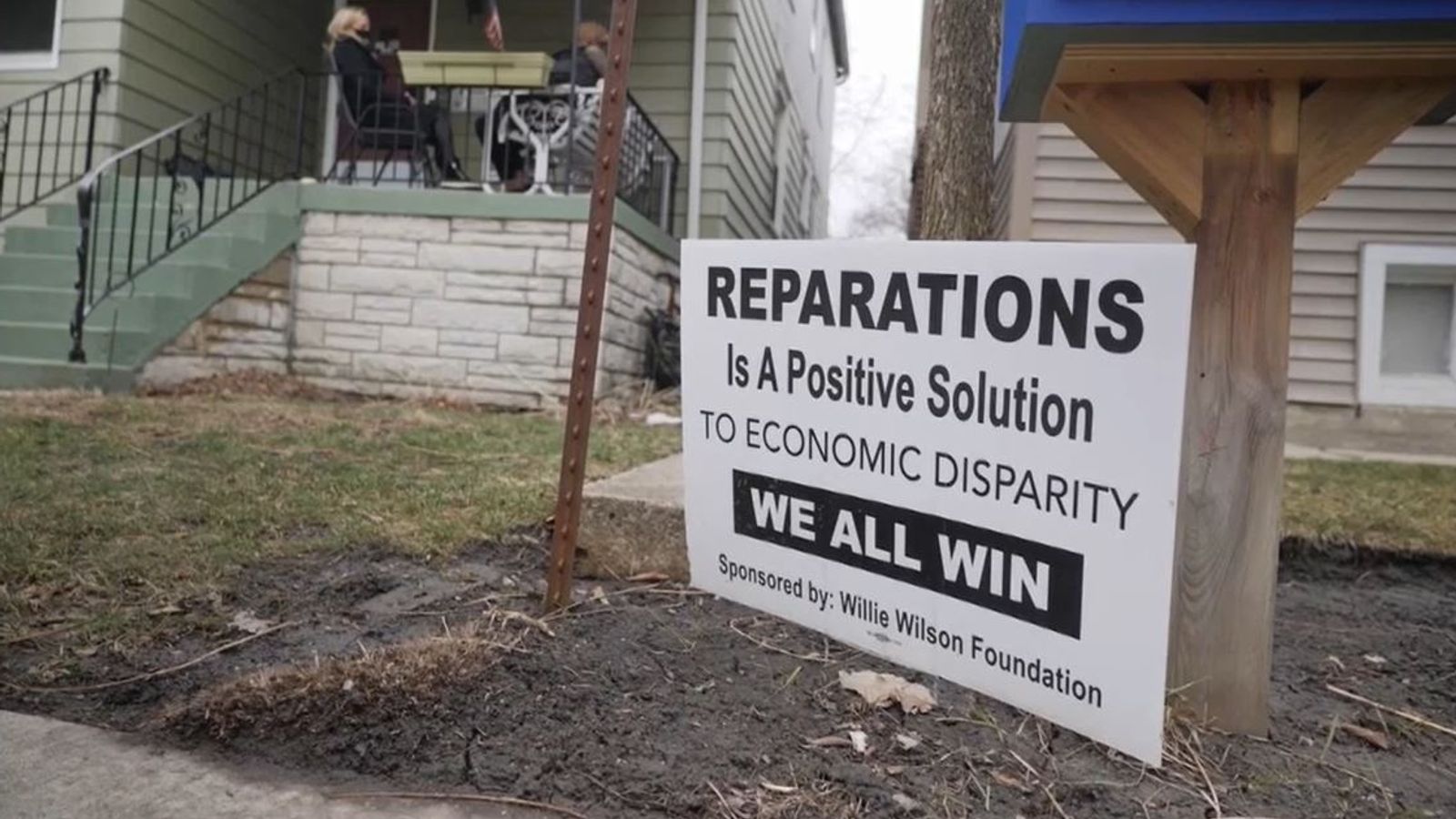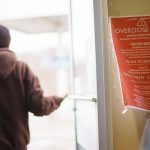Evanston, Illinois, north of Chicago, was one of the most segregated cities in America.
Now it’s the first to pay financial compensation for racist policies that have left a lasting wealth gap between its black and white residents.
When families fled slavery and suppression in the south, discrimination and oppression followed them north to cities like Evanston where they sought to find jobs and begin a new life.
No matter how hard they worked, black residents were limited to buying property in one small triangle to the west of Evanston – an area graded as “hazardous, home to an undesirable population”.
They were banned from owning a house anywhere else in the city. People weren’t only racially zoned. By the 1940s, banks had largely stopped offering loans to black families.
The area they were allocated, known as the fifth ward, was deprived of investment, parks, playgrounds, grocery stores.
Even today, it has no public school and children are bussed around the city for education.
This practice was widespread in America, but Evanston is the first city to offer some sort of financial repair – known as reparations.
Robin Rue Simmons, who grew up in the fifth ward, says she is happy first steps have been taken.
“It is not going to put a dent in the damages that have been done to black Evanston residents but we understand that steps are necessary,” she said.
“We hope others will continue to commit to reparations so we can grow the fund and get closer to full repair.
“That will certainly take lifetimes. It’ll take generations. It took us 402 years to get to this place in history: To get to this place of our racial divide based on egregious crimes against a humanity of black people.”
You only need to travel one block outside of this neighbourhood to see mansions and sprawling houses that surround the deprived area they’d been allocated under segregation.
The racist housing policies were scrapped around 50 years ago but the fifth ward continues to be the concentrated community of black residents in the city – and the economic disparity is stark.
There’s a $46,000 average income difference between black and white households in Evanston, a 13 year difference in life expectancy, and the wealth gap continues to grow.
Sara Diggs lives in the house her grandparents bought in 1941.
Sitting in her front porch, she explains to me life could have turned out very differently if her ancestors had been allowed to buy where they were living in south Evanston.
“The property values in that area are much greater than here. I mean astronomically different. So where would my family be if I was sitting at one of those houses instead of here?” says Sara.
Under the reparations plan, eligible residents like Sara will receive a $25,000 grant to go towards home ownership, home improvement or mortgage assistance.
The money is well intended but it can only be spent on housing and only in Evanston – and many residents simply can’t afford to buy here anymore.
The compensation may be imperfect and long overdue but it’s helping to drive a national conversation about how to repair the horrors of slavery and systemic racism.
Critics of the scheme warn that local policies offer help to too few people and risk giving the federal government an out in offering adequate compensation to people nationally.
As activist Marlon Watson said: “Not only is it inadequate, it’s a way to give legislators an exit.
“To say ‘I did something for black people’ when in actuality it’s not even close. It shouldn’t even be called reparations.
“We know America can do it on a federal level – we just saw about $10trn printed for COVID relief. It didn’t affect any budgets, there was no inflation, they just printed the money.
“We want to see that on a federal level for every American descendant of slavery, not just those in one particular municipality.”
Evanston’s reparations have been funded by community donations and revenue from a 3% tax collected on the sale of recreational cannabis.
The city has pledged to distribute $10m over 10 years.






















